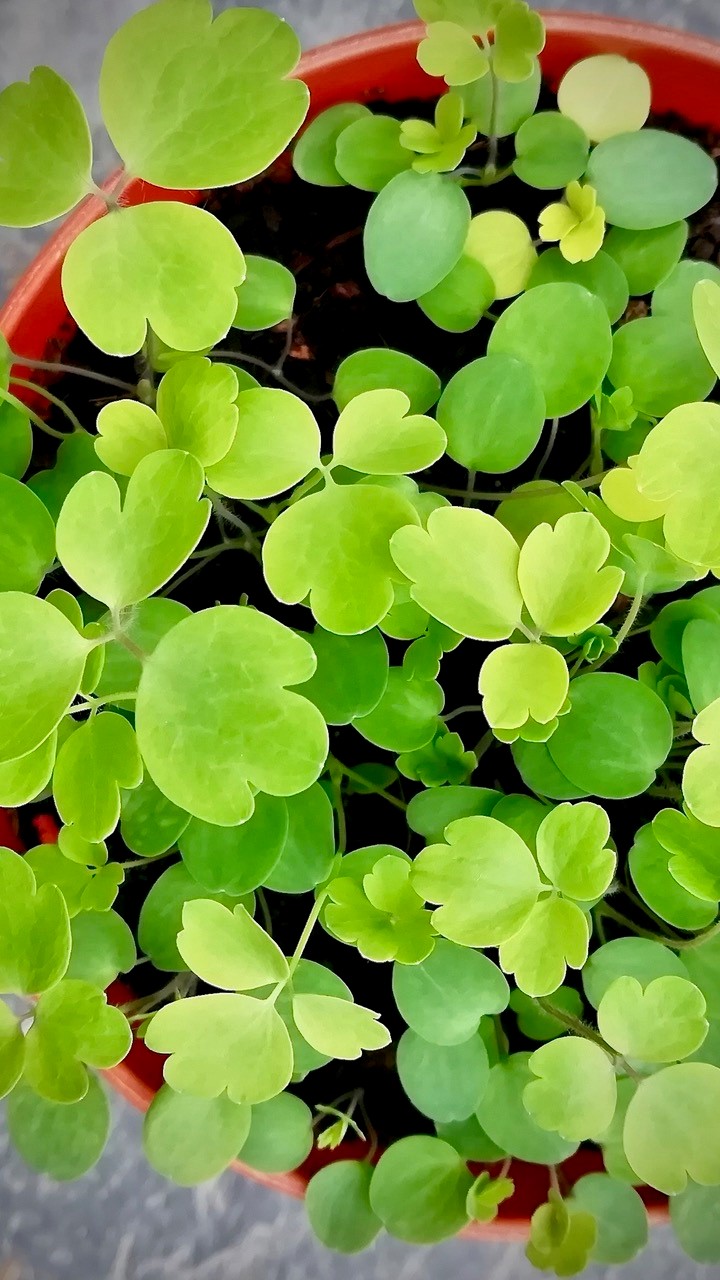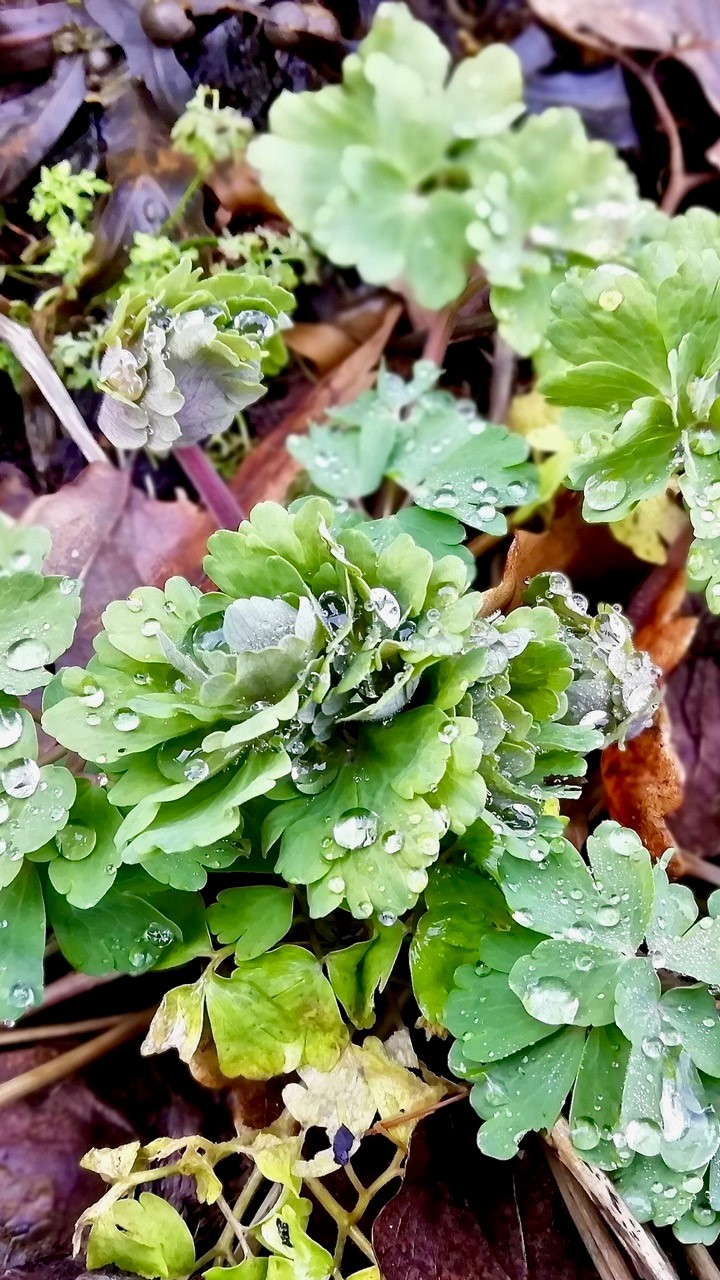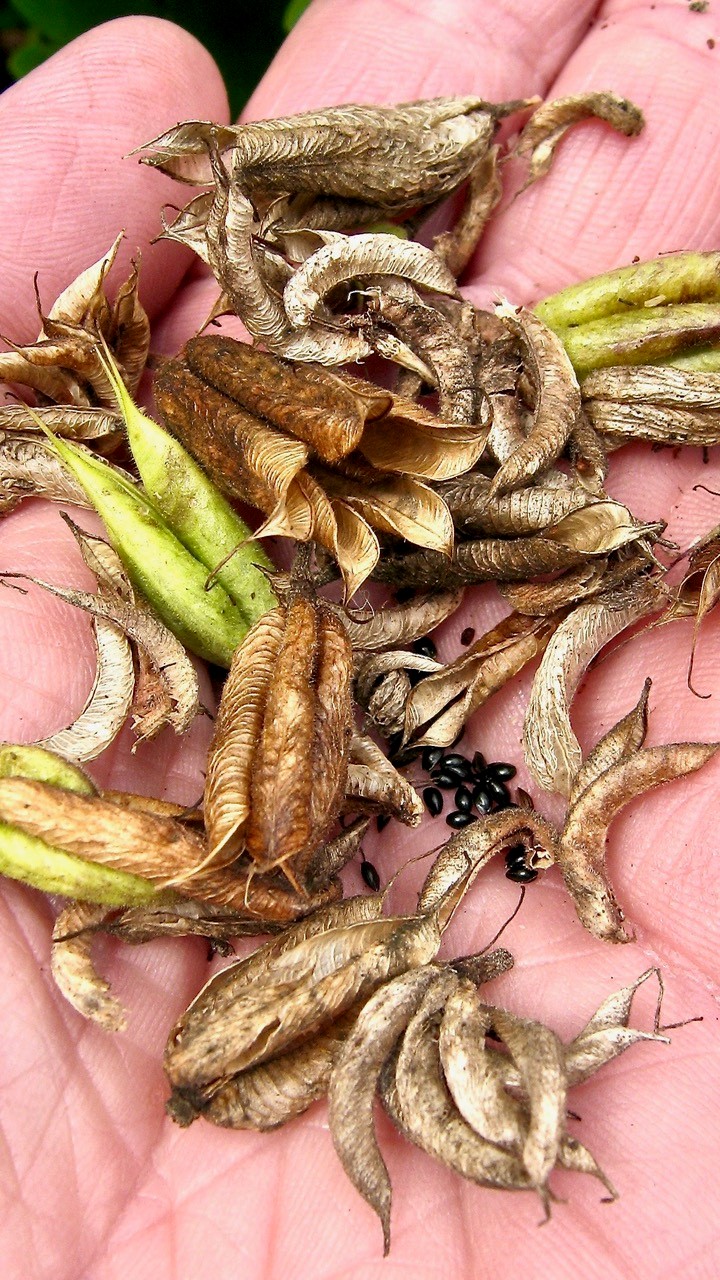Keeping seed-gathering and sowing close to home reduces gardening miles to footsteps – and results only in joy.

This spring, one coy flower, above all others, brought me an untrammelled and deeply satisfying joy that endured for weeks on end. It wasn’t just the early dash of pink and blue it added to my borders that gave me such delight, or the noisy foraging of bumblebees – heard anew in our abruptly hushed world – besieging its blooms. And it certainly wasn’t its rarity, its doubleness, its quirkiness or its choiceness; I’m no plant snob. This was a deeper, visceral joy, rooted – I eventually realised – in a simple premise: I’d grown my beautiful granny’s bonnets – aquilegias – myself. But it was more than that: how I’d grown them was at the heart of my springtime bliss.
The journey to that bliss began with a handful of black, glossy seeds, collected two summers back from a wild, self-sown corner of my neighbour’s garden, a two-minute stroll away. The seeds travelled in my palm; no non-recyclable foil- or plastic-skinned packet, no warehouse, no delivery van (and no ‘It’ll be with you soon!’ text or email) was required.

A few minutes later, I was sowing the seeds in a pre-loved and already-used-many-many-times plastic pot of my own tried and trusted peat-free compost mix; no contribution to climate breakdown was made. The pot was watered and stood in a shaded corner of my greenhouse. No propagator or other heating – apart from free and renewable sunlight captured by the glass – was necessary. Several weeks later, the pot overflowed with pale and delicate infant leaves – aquilegias come up like mustard and cress.
A week later, the infant bonnets were teased apart and potted up into more much-used pots filled with my homemade peat-free potting blend: a 50:50 mix of mature leafmould (a minute’s walk away) and rich, worm-worked ‘wormpost’ (about 15 seconds away). I had to sieve out a few lumps, but there was no microplastics-shed-by-tyres car trip to a garden centre needed, and no plastic bags involved (except that I did reuse some empty compost bags to store my mix in). I got an aerobic workout to boot, doing the ever-so-satisfying mixing on a used (and eventually compostable) cotton sheet – a quid from a local charity shop. My young bonnets were settled in using rainwater harvested from the roof and stored in a large, pre-loved water tank. The pots were then stood outside. They required no energy-intensive tap water, no dousing in derived-from-oil, sap-infiltrating pesticide, and no feeding.
By autumn, the young bonnets were romping away; strong roots and sturdy young crowns had formed before they died down for the winter. I teased out the few weed seedlings sprouting in my ultra-local potting mix. Early the following spring, pink-blushed young leaves unfurled in the heart of each pot, their signal loud and clear: plant us now!

Footsteps conveyed the young bonnets to their border destinations (and some spares to the neighbours through the wood). A little more muscle-power made holes for their eager roots, and the much-used pots were ready to go again. Rainwater settled them in, and wood chip mulch – wheelbarrowed from a heap on the roadside at the end of the lane – kept them snug, heatwave-proof and weed-free. They grew like the clappers, producing mounds of fresh green foliage, which aphids soon took a shine to – until they quickly caught the nose of hoverflies, whose larvae swiftly gobbled them up; no polluting insecticides were called for. Slugs big and small, and snails, steered clear.
Every few weeks throughout the summer, they got a watered-on feed made from nettle shoots, gathered 20 seconds away and brewed up in a lidded bucket (it’s malodorous stuff). No need for liquid plant food sold in a might-get-recycled-or-possibly-incinerated plastic bottle – nor an air-polluting trip out to buy it.

Ruthlessness beat impatience during my bonnets’ first full summer as fine young plants: I nipped off their few precocious flower stems, coaxing them instead into building strong crowns. More aphids had a go, and hoverflies soon snuffed them out, aided by some parasitoid wasps; only faith in nature’s own fixers was required. When the old leaves finally crumpled in autumn, their crowns were packed with embryonic flower buds, primed and ready for this blissful, fulfilling spring just past. The next show of bonnets promises seventh heaven.
But for now, I’m decanting – thanks to the busying bees – shiny black seeds from the sun-crisped pods on my patch, ready to start some new granny’s bonnets on their own slow and gentle, not-much-needed and joy-giving journey. Some have already set out, springing up through the mulch, rooting deep, finding their feet close to home. For these eager go-it-alones, not even I was required.
Text and images © John Walker
Find John on Twitter @earthFgardener










